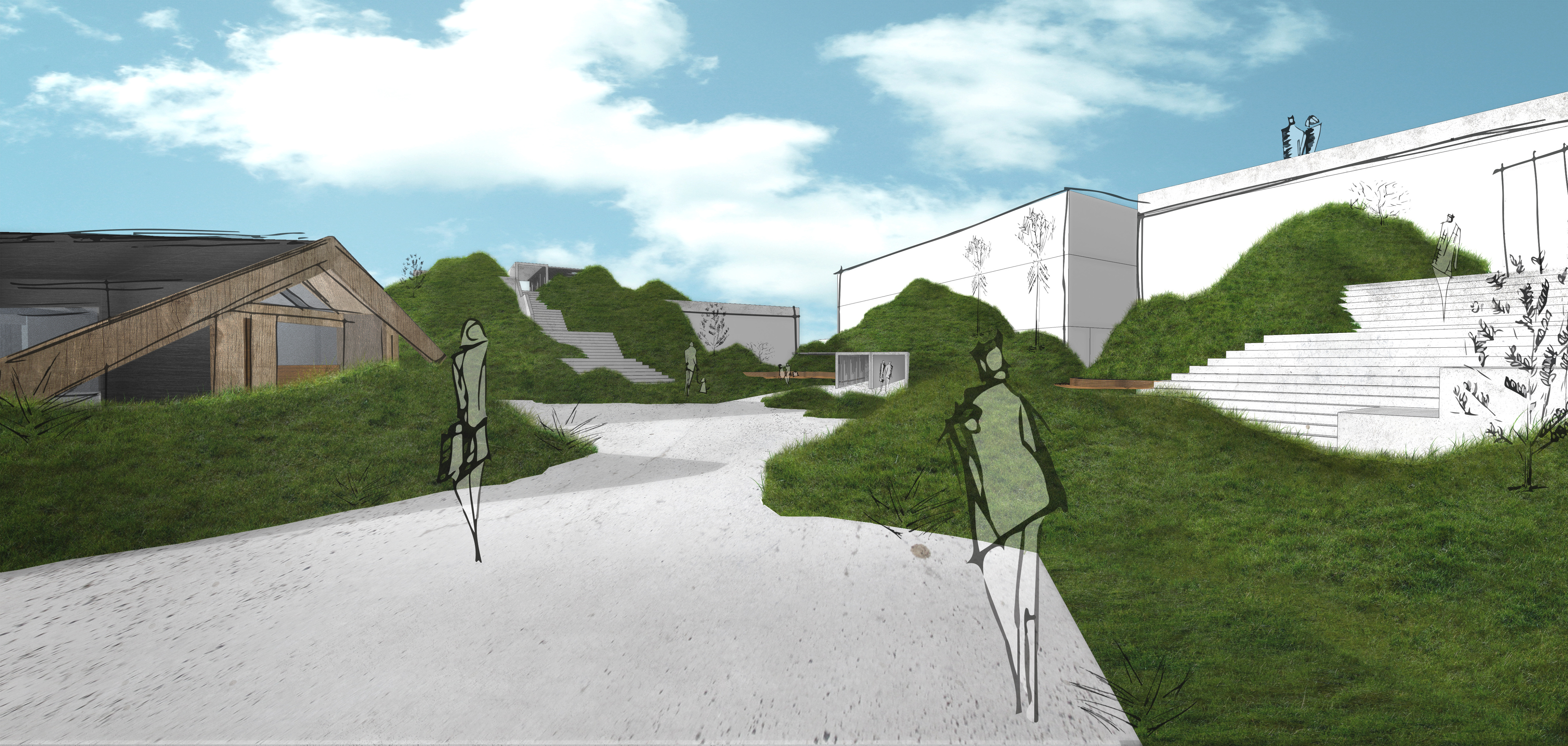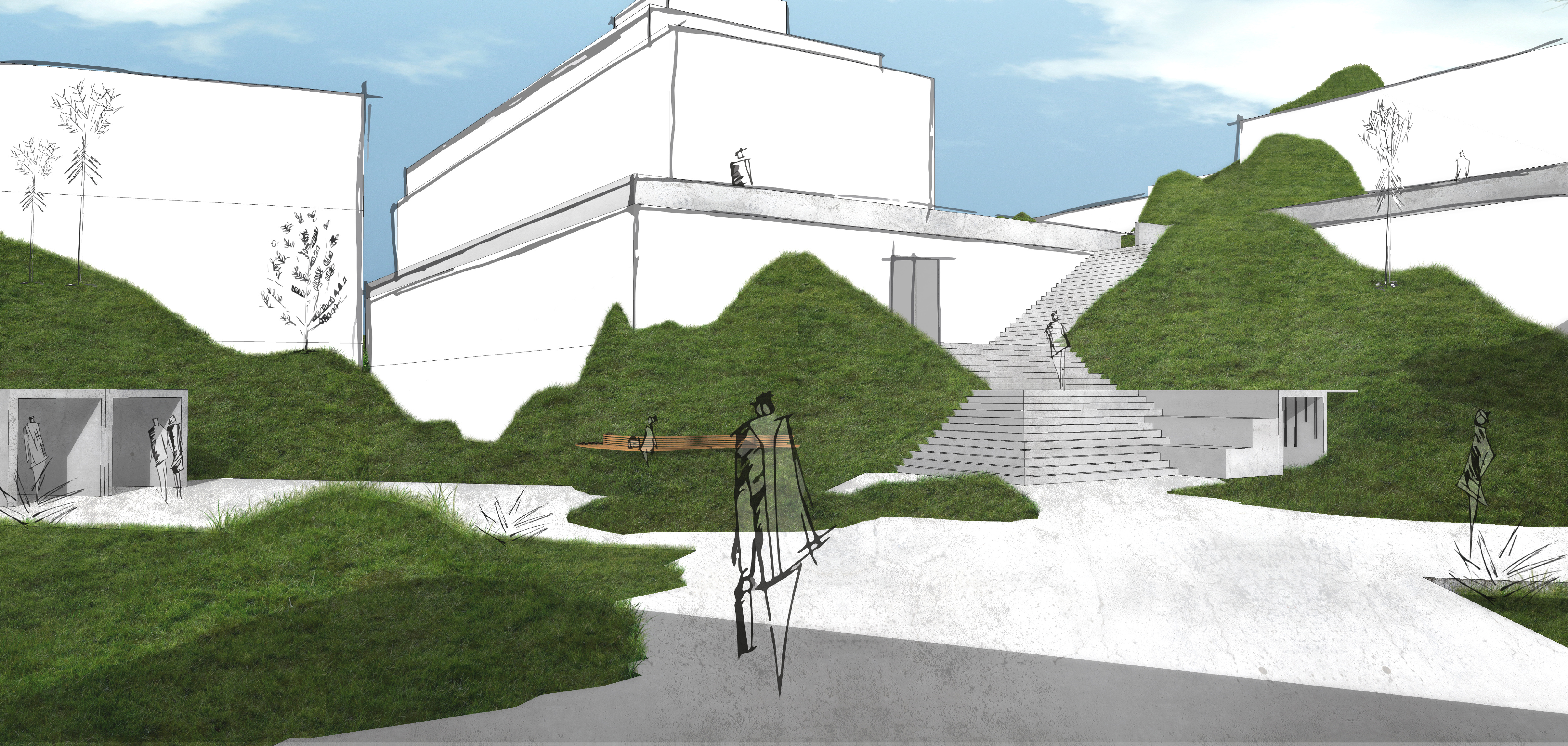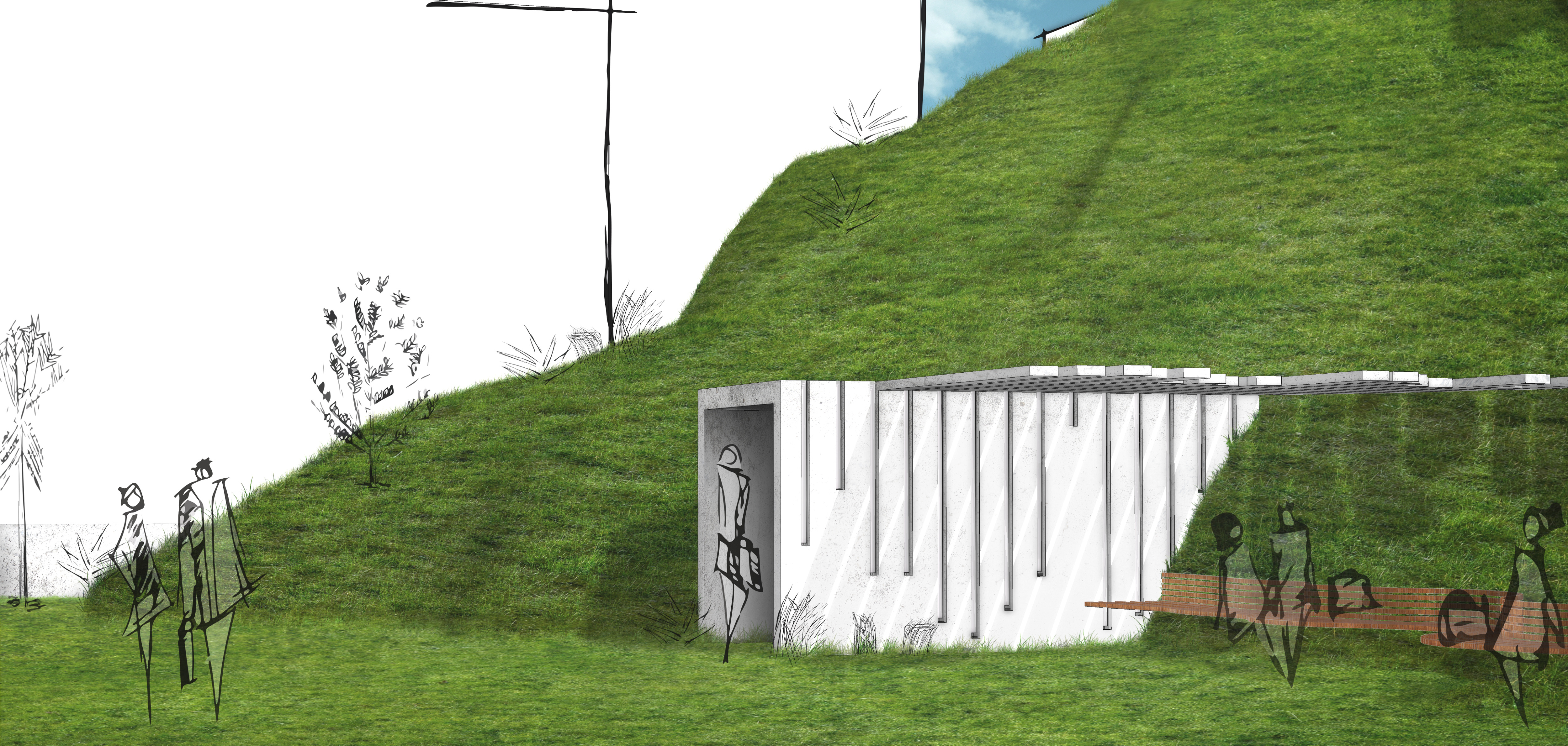SIETCH
Collaborators: Emily Corner, Irina MacoveiKOHA - Rethinking Public Space
224.258 Studio IIB
Spatial Design
Massey University
Tutors: Mercia Tawhiri-Kerr, Tony De Goldi
Grade: A
Group Blog
Concept
Sietch seeks to return some of Mount Cook's earthly koha. After twenti-five metres of levelling, the Massey University landscape will be reinvigorated, urging nature and natural forms to the forefront through contrast. Contrasting design elements intersect, embellish the terrain, and provide functionality. We aim to force patrons into thinking about difference: concrete and plant life, man and nature, then and now.
History
The Massey University Campus is located on what was formerly a Pa for Maori living around Te Whanganui a Tara and Wellington Harbour. Ngai Tara named the site Pukeahu. Its hill rose between the Waitangi and Waimapihi streams. The area and its surrounding slopes stretched to the harbour and were once the site of extensive kainga and gardens. Mount Cook may have been a burial site hence the name Pukeahu ("sacred hill").
Mount Cook's vantage point over central Wellington made it a useful defence site. Excavations between 1848 and 1883 has seen Mount Cook lose twenty-five metres of height.

Koha
Mount Cook gave us an environment, a site, a place, a space, and even its dirt. The design serves as a political statement. As we near a time of dangerous climate change, we can return some of the earth, then plant life, to foster a more diverse ecosystem, and a more sustainable site.
Acknowledging that things can never be the same again, Mount Cook becomes layers comprised of multiple representations of its own ideal, with the design providing impetus for others to delve into these layers of history.


Ecology
“Nobody likes it when you mention the unconscious, and nowadays, hardly anybody likes it when you mention the environment. You risk sounding boring or judgmental or hysterical, or a mixture of these. But there is a deeper reason. Nobody likes it when you mention the unconscious, not because you are pointing out something obscene that should remain hidden - that is at least partly enjoyable. Nobody likes it because when you mention it, it becomes conscious. In the same way, when you mention the environment, you bring it into the foreground. In other words, it stops being the environment. It stops being That Thing Over There that surrounds and sustains us.--Morton, Timothy. "Introduction: Toward a Theory of Ecological Criticism." Ecology Without Nature: Rethinking Environment Aesthetics. Cambridge; London: Harvard University Press, 2007. 1-28.
The Massey site will, in time, become a site of revegetated native bush. Plants native to the Wellington area will be used. Planting for revegetation happens in three stages: pioneer, seral, and climax. Existing plants will be transplanted alongside this process.
The foregrounding of the environment is important, while confronting, because it forces attention. It also evens out the balance between architecture and landscape, man-made materials and natural forms, etcetera.

Intersection
A common point where two contrasting elements come together.
The joining of cool, placid concrete and natural forms of undulating terrain. The soft timber of the curving seating connects to the severe heavy wall of the angular tunnels. Caricaturing the intersection of our built environment and the natural landscape while providing a functionality in the heart of the Massey Campus.


Dune
"Fremen: Place of assembly in time of danger. Because the Fremen lived so long in peril, the term came by general usage to designate any cave warren inhabited by one of their tribal communities."
Sietch is a design project that seeks to create a community atmosphere out of a palce that is at time stressful. As with the gradual change in meaning above, we aim to gradually change the meaning of Massey to its students. In the book Dune by Frank Herbert, a Sietch is a village within cave systems in mountains or rock outcrops. In our design, numerous unique spaces can be inhabited to provide tranquility in times of dangerous student life.
The ecological themes of Dune were also a source of inspiration. The detailed implications and ramifications of life on an almost water-less planet exercise the imagination in delving into our own histories, and what we are doing now.







